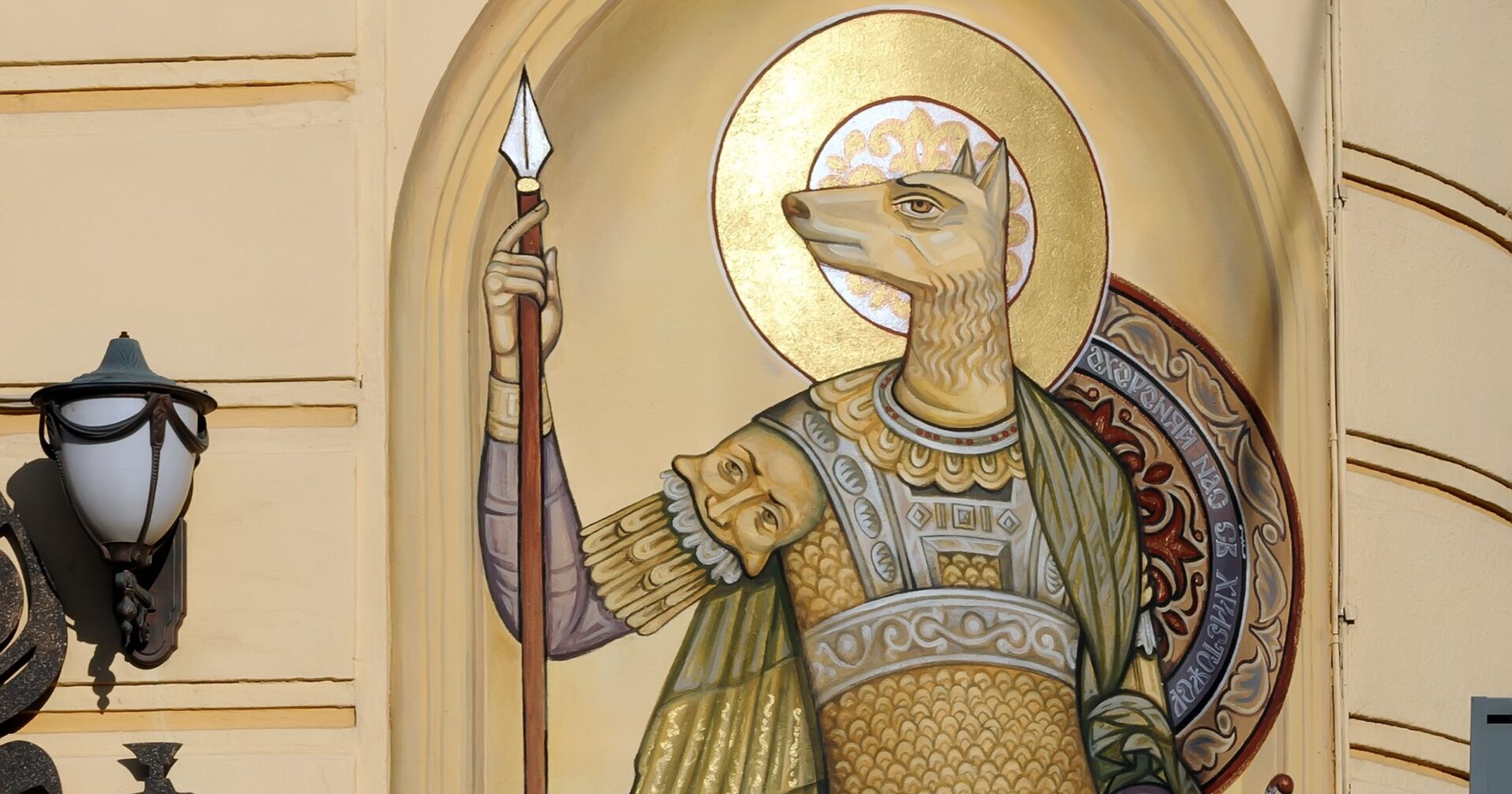Little is known of Saint Christopher’s life, the martyr killed under the religious persecution of Roman Emperor Decius.
The most famous tale in his hagiography tells of the time he carried a child, a stranger to him, across a river. When he brought the child safely to the shore on the other side, the child revealed Himself to Saint Christopher as Christ.
This legend earned Saint Christopher the patronage of travelers, and small images and icons of him are often worn by Catholics or kept on hand while travelling.
Some of these depictions of Saint Christopher are famous for one thing: depicting him with the head of a dog, most oftenly seen in iconography from the Eastern Churches.
According to his hagiographic narrative, Saint Christopher was once named Reprobus, captured in combat against tribes dwelling to the west of Egypt in Cyrenaica. He was a member of the Marmaricae Berber tribe, a characteristic of the tribe reportedly being of enormous size with the heads of dogs rather than men.
The medieval Irish Passion of Saint Christopher says similarly of him: “This Christopher was one of the Dog-heads, a race that had the heads of dogs and ate human flesh,” reflecting a belief in cynocephaly, the idea that a race of dog headed people inhabited the world.
The most likely conclusion as to the association of Saint Christopher with dogheaddedness, and the origin of these fantastical tales? The Byzantine mistranslation of the Latin term Cananeus (Canaanite) to read canineus (canine).
At one point, a mistaken transcription during the Middle Ages was made, the chance error of a medieval scribe making its mark on history when the association of Saint Christopher, and dogheaddedness, stuck.
Editorial credit: Havoc / Shutterstock.com














